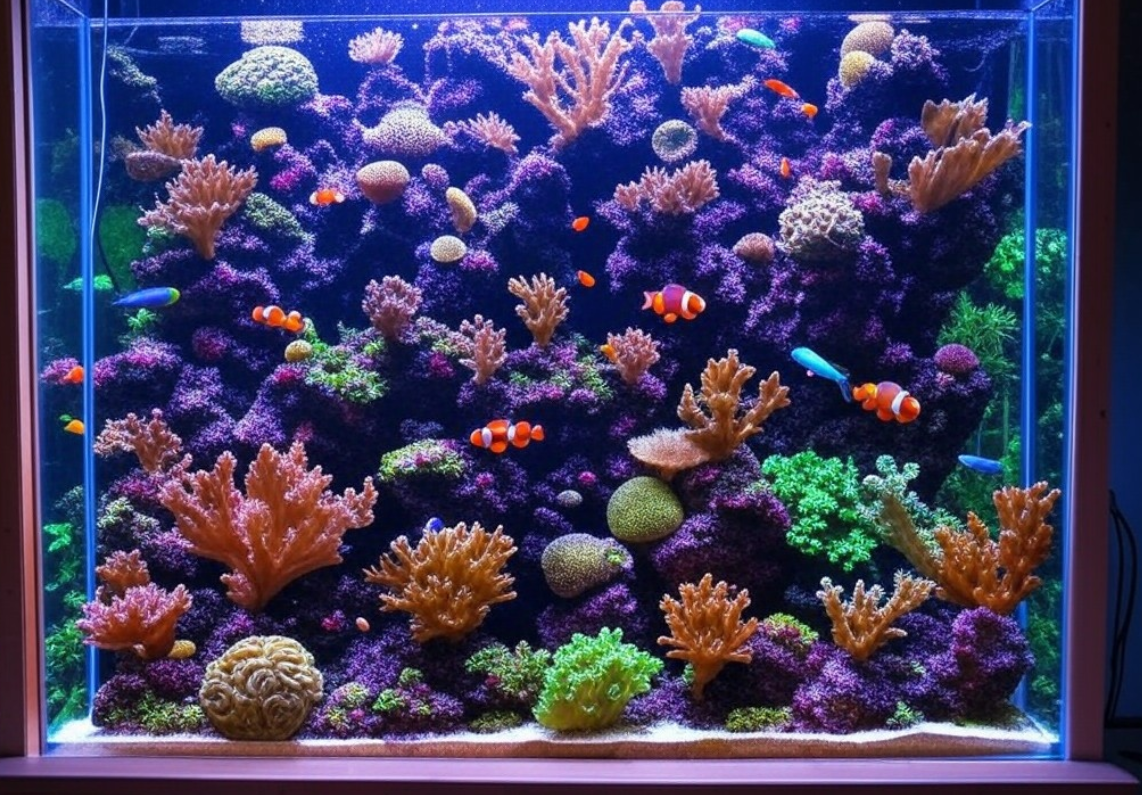Table of Contents
![]()
Planning and Research
Embarking on the journey of setting up a saltwater reef aquarium can be both exciting and daunting, especially when you’re working within a budget. First, understand your goals. Are you looking for a Fish-Only (FO) setup, a Fish-Only with Live Rock (FOWLR), or a full reef system with corals? Each type influences your initial and ongoing expenses.
Next, set a clear budget. This includes not just the startup costs but also the ongoing maintenance like food, water changes, and equipment replacements. Knowing your financial constraints will guide your choices throughout the setup process.
Choosing the Tank
Size matters in aquariums. Smaller tanks like 20-30 gallons are often recommended for beginners due to cost and ease of maintenance. However, remember that larger tanks, while initially more expensive, offer more stability in water parameters.
For the material, glass tanks are generally cheaper than acrylic but are heavier and can scratch more easily. Consider checking out local aquarium clubs or online forums for second-hand deals. Another option is All-In-One (AIO) systems, which integrate filtration, reducing additional costs.
Essential Equipment
Filtration
- Hang on Back (HOB) Filters can be cost-effective for smaller setups. If you’re looking at something a bit more sophisticated, consider a basic sump if your setup and budget allow.
- A Protein Skimmer is vital for water clarity and quality, helping remove organic compounds. Start with an entry-level model.
Lighting
- LED Lights are energy-efficient and can be upgraded as your reef grows. For beginners, less intense lights might suffice until you start adding corals.
Additional Equipment
- Heater: A basic model that matches your tank’s size (typically 3-5 watts per gallon) is essential.
- Powerheads for water movement can often be found at a lower cost or second-hand.
- Substrate: Opt for live sand for immediate biological benefits or cheaper dry sand which you can seed with bacteria over time.
Water Preparation
Choosing your water source can significantly impact your budget. Tap water, treated with a dechlorinator, can work, or invest in a basic reverse osmosis (RO) system for superior water quality. For salt mix, economical brands like Instant Ocean Reef Crystals are a good start for regular use.
Biological Filtration
Live Rock is crucial for biological filtration. Dry rock is cheaper than live rock, but you can introduce bacteria through supplements or pieces from an established aquarium. Cycling your tank is essential; this process can be expedited with bacteria supplements or old filter media from another tank.
Livestock Selection
Begin with hardy, cost-effective fish like clownfish, damsels, or gobies. Avoid pricier species until your system is mature. A clean-up crew of snails and hermit crabs not only helps maintain the tank but is also relatively inexpensive.
Maintenance and Upgrades
Regular maintenance like water testing, changes, and cleaning is crucial to prevent costly issues.
- DIY projects can be both fun and economical. Consider making DIY wave makers or light hangers.
- Gradual upgrades allow you to improve your setup over time. As funds allow, upgrade to better lighting or introduce more complex filtration.
Ongoing Costs
- Electricity: Running lights, heaters, and pumps adds up. Opt for energy-efficient options like LED lights and DC pumps.
- Consumables: Keep in mind the continuous cost of salt, water conditioners, and fish food. Buying in bulk during sales can mitigate these expenses.
Community and Learning
Joining forums, local clubs, or online communities can be invaluable. Not only can you source used equipment affordably, but you’ll also gain insights and sometimes free or discounted supplies.
By focusing on essential equipment, smart planning, and leveraging community resources, you can successfully set up and maintain a beautiful saltwater reef aquarium without breaking the bank. Patience, gradual investment, and ongoing education will ensure that your reef thrives while keeping expenses manageable.
Share This





Be the first to comment